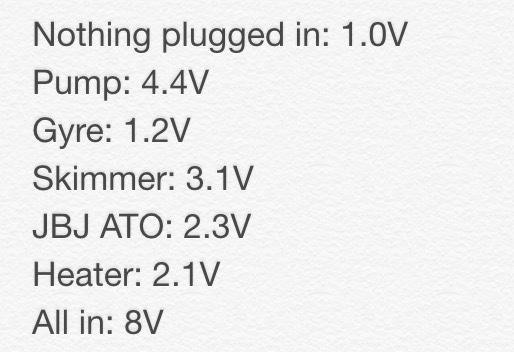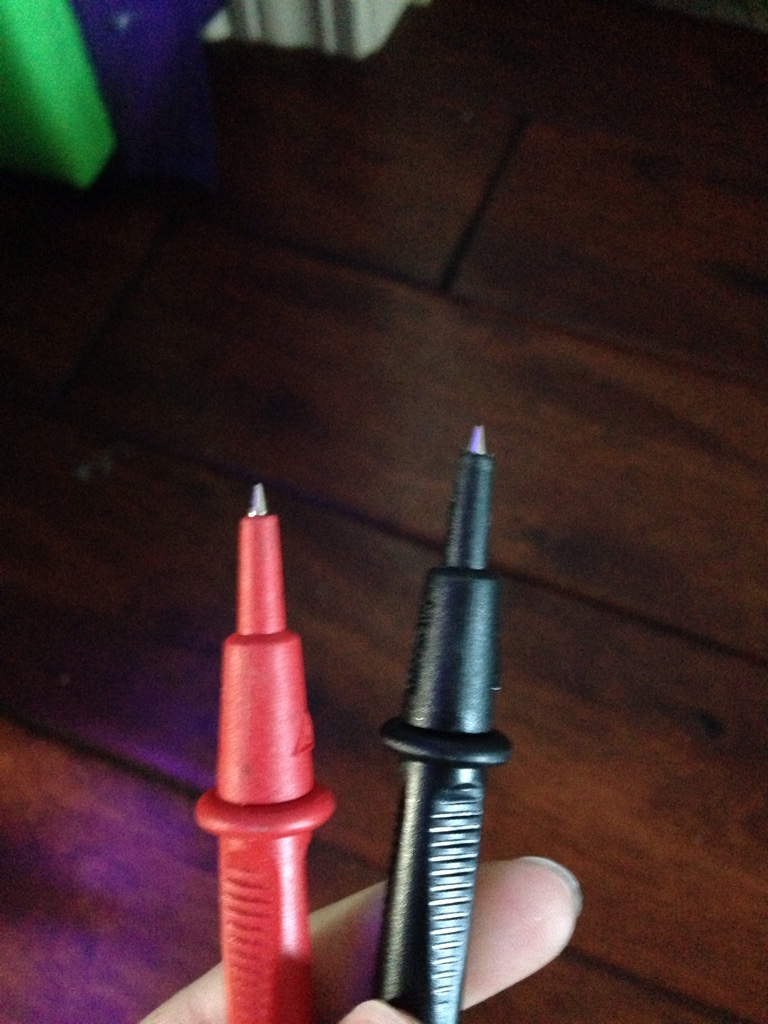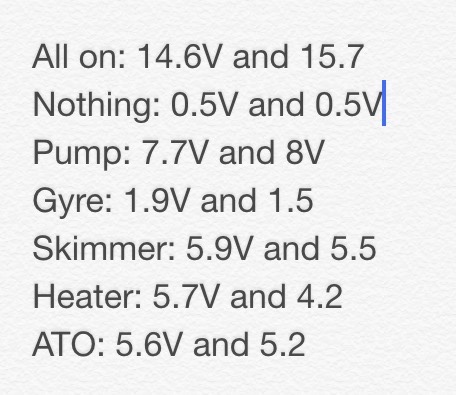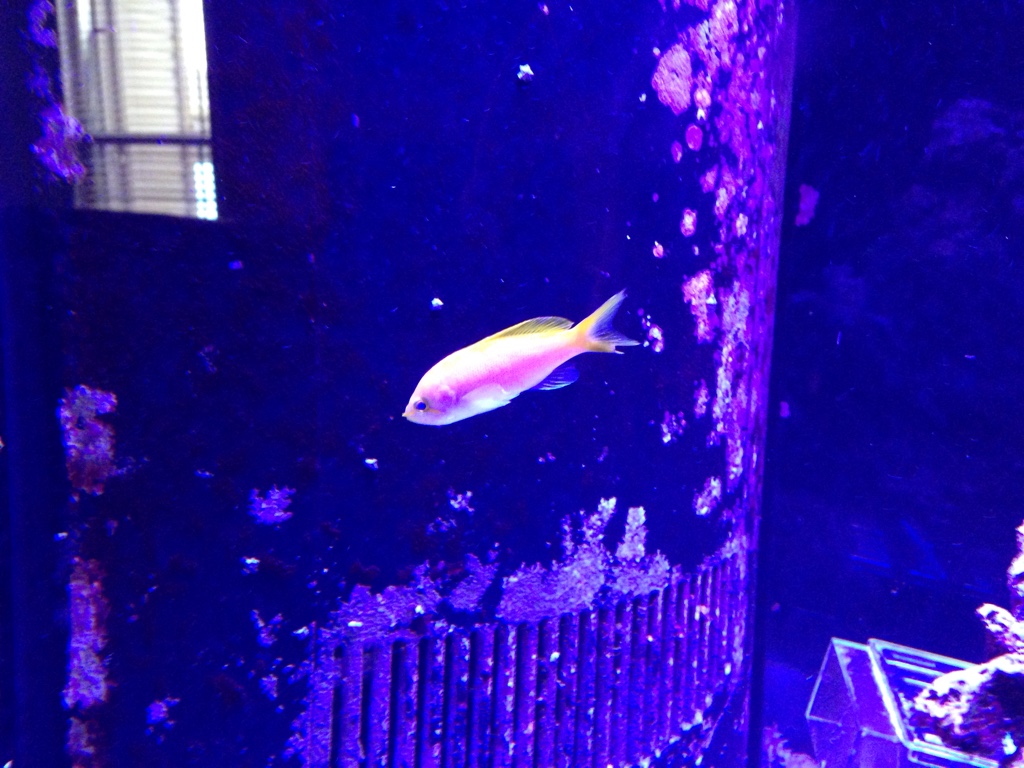Are you reading this by testing the water with a voltmeter?
Yes. I just repeated tests myself since hubby did it this morning and here's what I got:

Follow along with the video below to see how to install our site as a web app on your home screen.
Note: This feature may not be available in some browsers.
Are you reading this by testing the water with a voltmeter?

How to use a voltmeter to test for stray voltage:
Get a three prong extension cord.
Plug it into a nearby outlet.
Change your meter to the RED V with a squiggle over it. . The next one up from your picture's setting.
Now place one probe into the ground hole of the extension cord.
Place the other probe into the widest remaining prong slot. You should see some very low reading. Perhaps a volt or three. This is the Neutral. This is just making sure your ground is really a ground.
Now move the probe from the wide slot to the the narrow one.
You should now see something around 120V. This is the HOT.
If these last two things happened as I stated then your outlet that the extension cord is plugged into is in all likelihood correctly wired.
Now to test your tank. Before going further you need your Ground test lead to be reliable or you can make bad errors. Like thinking something that is fatally live, is not. So you should grab some masking tape or electrical tape, (not scotch or duct), and tape the probe snugly into the ground hole on the extension cord. Once this is done you should be able to wiggle the test lead a bit and not have the ground probe connection interrupted.
When done taping, again test the ground by probing the Hot again.
If that reads correctly you're set to go.
Using the free probe touch it to your tank water - read the meter.
you will likely see something like 60V or possibly even 120V. If so you have a PROBLEM.
Leave that probe in contact with the water, you can tape it somehow, (here you could use duct tape on the probe handle).
Now while checking the meter start unplugging things one at a time.
Do this until the reading plunges to very close to zero. The last thing that you unplugged was the culprit. Once you think you have the culprit always take the probe back to the hot slot in the extension cord and prove nothing has changed to cause the meter to stop working, like the ground probe has come out of contact, or a test lead has failed. Once you've re-proven the test setup you can be confident that you really found the problem.
Remove the problem completely from your aquarium setup and if it has exposed metal like a light fixture you can re-power it and then touch the probe directly to it while it's isolated from the system. This will confirm your prior test.
If it IS a fixture. Unplug it again and then examine it. You may find a frayed wire or cracked insulation, or a large salt buildup somewhere. If it is a cracked or frayed cord inspect for other age issues. Are the lamp prongs all corroded? If so you should replace all that, or pitch the entire fixture. If it's just the cord DO NOT try to repair the cord. It's a fools errand! Replace it with a new cord.
If it is a non metallic device like a heater cut the cord off of it as close to the heater body as possible so some fool doesn't try to resurrect it. Heave it in the trash and acquire a new one.
If it's something else let us know and we can help you make a determination.
I must stress that hunting for a problem like this is not without hazard. People have died while trying to find issues like this.
Be very conscious of what you are trying to do from moment to moment. Do not touch anything that might be conductive while hunting this problem. Even a salty cord could result in injury. Commonly a high resistance fault that smarts badly can be upgraded to a fatal low resistance fault because you wiggled the wrong thing or somehow increased the contact area. Don't get all entangled under the tank or bent over a sump, or rest your hand on a piece of metal or a pump while doing this troubleshooting. Approach the problem like everything is live, and out to get you, and you will be safe.


Thank youI ordered the probe and installed a GFCI last night.
Related question: just in the last week, I've lost an Acro frag, an Anthias, and a finger leather is dying. Other things look pretty angry. The fish are all eating and look happy (the Tang of course looks like it's been through a mulcher). Nitrates testing at 5. Would all this be attributed to the voltage, maybe using the Kanaplex, or something else?
Typically, fish recover from gram positive bacterial infections via their natural immune system. Of course, maintaining pristine water conditions and feeding vitamin enriched foods helps. However, if you've introduced a gram negative bacterial strain into your DT then the fish are probably going to need antibiotic meds to assist their immune system in overcoming that. I would at the very least start soaking their food with Seachem Kanaplex, and also use Seachem Focus to bind the medication to the food and prevent it from leaching out into the water column. Run carbon as a little extra insurance policy... doing both should make it "reef safe" to use.
The problem with gram positive vs. gram negative is you never know for sure which you are dealing with without a scope ID.

Ground probe went in last night.
That's not really enough time to "fix" any issues it might have caused. Have you tested again since installing it?
